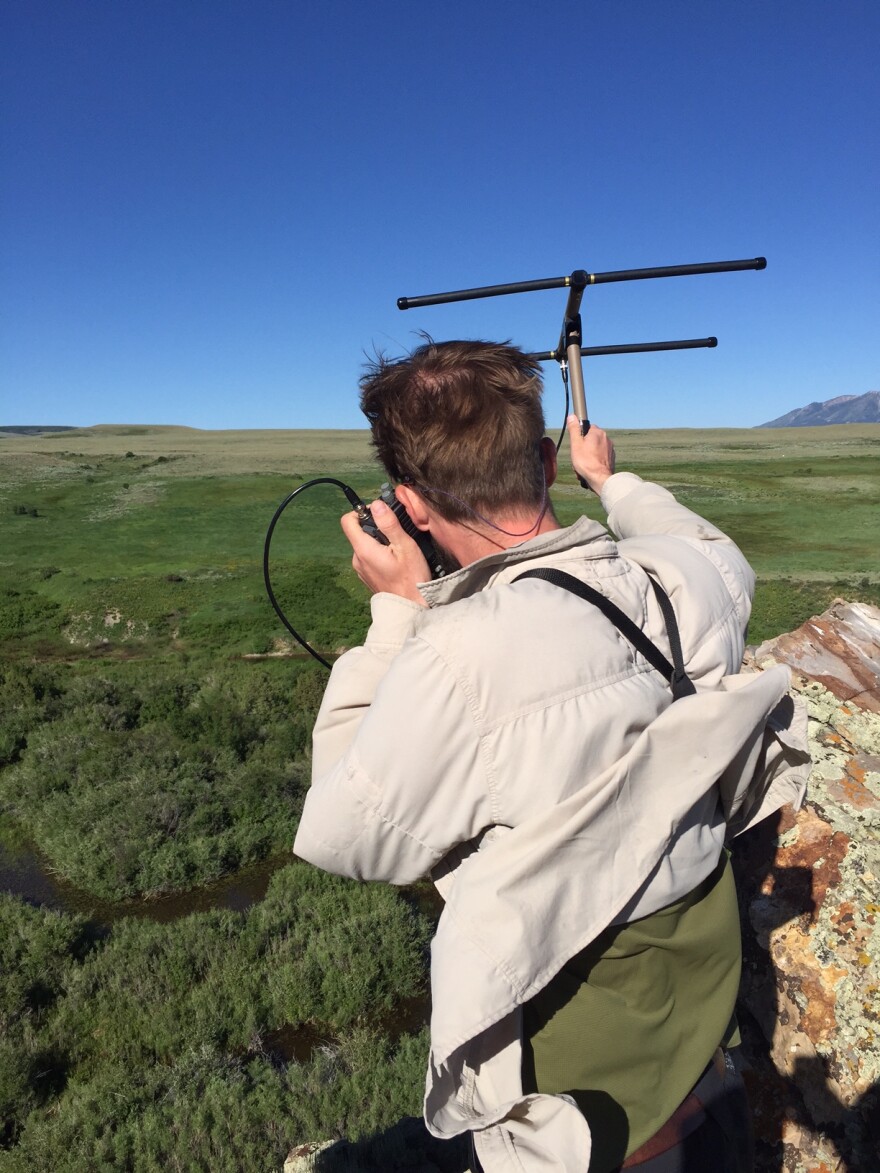Most moose herds in Wyoming are in decline, but the Snowy Range Moose herd appears to be an exception. After a moose re-introduction in northern Colorado, they started showing up in the Snowy Range Mountains west of Laramie in the 1980s.
They’re commonly spotted throughout southeast Wyoming, but there is little data concerning their exact numbers. Now a joint research project by the University of Wyoming and Wyoming Game and Fish is trying to change that.
Up in the mountains researchers Alex May and Jake Warner are on the trail of a cow moose. They collared the moose in the spring and have a general idea of where she is.
“So we’ll get out here and see if she’s close by or if we need to drive somewhere else.”

May is a Master Student for the UW Co-Op. He says it’s important to see the moose.
“A big part of it is how many calves does she have, does she have one or does she have two. And these are all moose that we determined to be pregnant when we captured them in March. And we are also looking at calf survival throughout the summer.”
As he picks his way across a windy bluff, May explains that elsewhere, moose calves frequently die in the first couple of weeks after birth, but not in the Snowies.
“But what we’re seeing so far with this population is that many calves are surviving through the summer but they have a hard time in winter, we tend to lose a lot of them through the August and winter period. “
The researchers hike down a ridge and find a second bluff that overlooks a large valley with the Snowy Range Mountains in the background. There is a river with lots of trees and bushes, a great hiding place for moose.
“I’ll probably walk to the end of this ridge just to be sure, but it seems like she’s right in there” said May.
The researchers are trying hard not to startle the moose. May said they don’t want her to take off without seeing her.
“As soon as she has our scent, or she hears a twig snap, then the game is up. And they usually walk off or trot off and you really have no hope of catching up you know.”
We see a coyote, we see a deer, but no sign of the moose, and all of a sudden they pop out and start staring at us. And just as suddenly they take off. May described the scene.

“And so the Cow got startled and she came out of her hiding spot and crossed the river and now she’s running through the sage and her calf is probably 50 or 60 yards behind her.”
May said this particular cow and calf looked healthy, but others looked thin with ribs poking out
“A lot of these moose that are on these river drainages actually winter high up in the forest, so when we catch her she’s clear over in that ridgeline in the trees and then she comes to this river in the summertime. So one of the goals of this project is to find out why. Which strategies are more productive for survival and calf production versus others,” said May.
One theory is that beetle kill in forest is helping moose survive. Corey Class is in charge of the Wyoming Game and Fish portion of the project.
“Especially with beetle kill if more openness in the forest canopy creates better moose populations, then maybe that’s something we should look at down the road. Yeah, certainly trying to pick out the things that are benefiting the heard, and try and get those in other herds as well. “
Class added that if they can figure out what habitat is better for moose, they should be able to replicate that elsewhere in the state.




